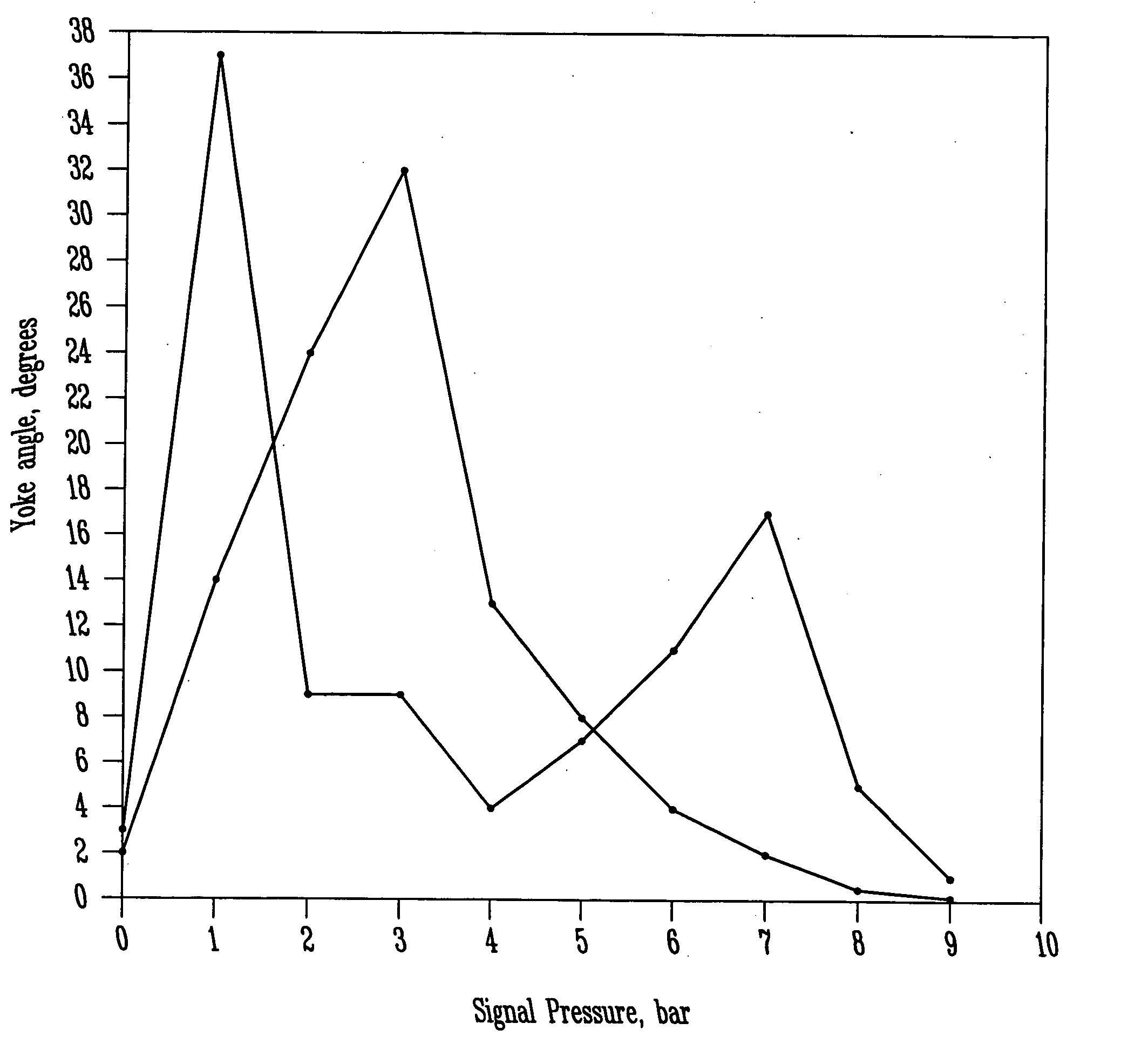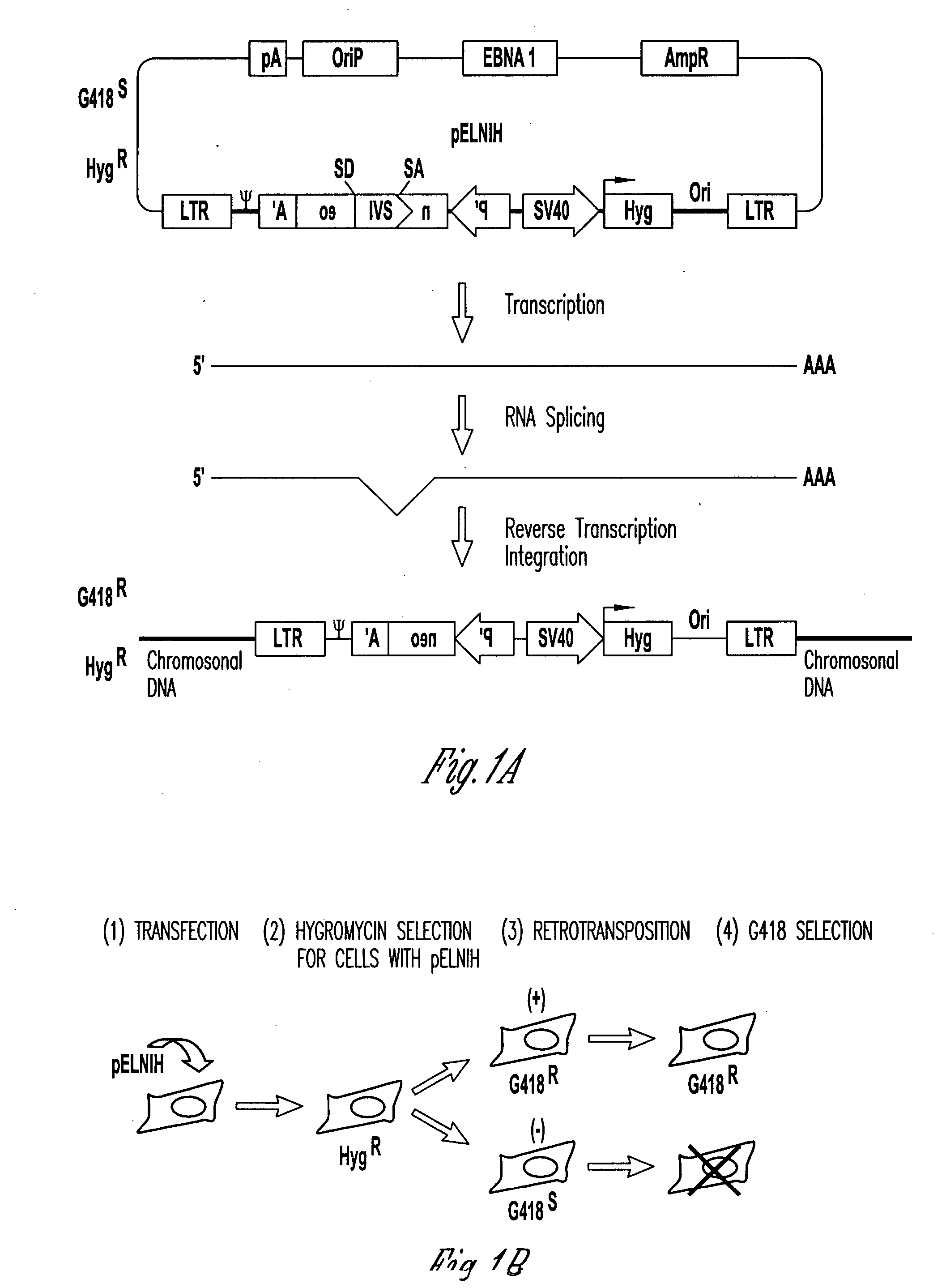Methods and compositions for increasing viral vector production in packaging cell lines
a cell line and vector technology, applied in the field of genetic engineering, can solve the problems of reduced or complete loss of vector production, and achieve the effects of reducing the chance of recombination, reducing the likelihood of viral protein expression, and minimizing the viral componen
- Summary
- Abstract
- Description
- Claims
- Application Information
AI Technical Summary
Benefits of technology
Problems solved by technology
Method used
Image
Examples
example 1
Restriction Mapping of Retroviral Vector Episomal DNA
[0055] High frequencies of superinfection, (Young, W.-B., G. L. Lindberg, and C. J. Link, Jr. 1999. DNA methylation increased genetic instability of retroviral vector producer cells. In preparation) and retrotransposition, (Young, W.-B., G. L. Lindberg, and C. J. Link, Jr. 1999. High frequency retrotransposition of retroviral vector in cultured vector producer cells. In preparation), of retroviral vectors in cultured VPC results in detectable amounts of episomal DNA. Episomal DNA is advantageous for the Southern analysis of vectors because it is not subject to interference from endogenous retroviral sequences. Episomal vectors or retroviral sequences have been observed with other retroviruses, including mouse mammary tumor virus (Ringold, G. M., K. R. Yamamoto, P. R. Shank, and H. E. Varmus. 1977. Mouse mammary tumor virus DNA in infected rat cells: characterization of unintegrated forms. Cell. 10:19-26), avian sarcoma virus (Var...
example 2
Chimeric Retroviral Helper Virus and Picornavirus IRES Sequence to Eliminate DNA Methylation for Improved Retroviral Packaging Cells
[0060] Most retroviral packaging cell lines were established by a helper virus plasmid co-transfected with a separate plasmid encoding a selection marker. Since this selection marker co-existed in trans with the helper virus sequence, helper virus gene expression could be inactivated by host DNA methylation despite selection for the co-transfected selection marker. We have reported that DNA methylation could occur in the LTR region of helper virus in vector producer cells (VPC) up to 2% of the population per day (Young et. al., JVI 1836-99). To overcome host cell DNA methylation that suppresses viral gene expression, we constructed a chimeric retroviral helper virus, pAM3-IRES-Zeo, that contains MoMLV helper virus and a picornavirus internal ribosome entry site (IRES) sequence followed by a Zeocin™ selection marker at the 3′ end of env sequence. This p...
example 3
Results of Cloning of Stably Transfected Retroviral VPC (A375.AMIZ-1 / LNL and A375.AMIZ-2 / LNL) by Limiting Dilutions
History of the Project
[0083] 1. A375.NV human malanoma cell line was transfected with packaging construct designed by Won Bin Young (pPAM-IRES-Zeo) and selected with 350 μg / ml Zeo. This resulted in 2 clones (Zeo resistant) A375.AMIZ-1 and A375.AMIZ-2. Starting from first passages A375.AMIZ-2 had doubling time approximately twice shorter when equal number of cells for each line was seeded (2×106 / T80 flask) and counted after 72 hours.
[0084] 2. A375.AMIZ-1 and A375.AMIZ-2 packaging cell lines were each transfected with LNL construct (MSEV LTR construct by Won Bin and Bob Unfer) in 6 well plates. Each transfection well was carried individually through G418 selection (1 mg G418 / ml and 48 hour supsernatants from each stably transfected subculture (at least 14 days of G418 selection) were titered on Igrov.NV cells.
[0085] 3. Two best mixed populations with highest titers, ...
PUM
| Property | Measurement | Unit |
|---|---|---|
| Fraction | aaaaa | aaaaa |
| Fraction | aaaaa | aaaaa |
| Fraction | aaaaa | aaaaa |
Abstract
Description
Claims
Application Information
 Login to View More
Login to View More - R&D
- Intellectual Property
- Life Sciences
- Materials
- Tech Scout
- Unparalleled Data Quality
- Higher Quality Content
- 60% Fewer Hallucinations
Browse by: Latest US Patents, China's latest patents, Technical Efficacy Thesaurus, Application Domain, Technology Topic, Popular Technical Reports.
© 2025 PatSnap. All rights reserved.Legal|Privacy policy|Modern Slavery Act Transparency Statement|Sitemap|About US| Contact US: help@patsnap.com



